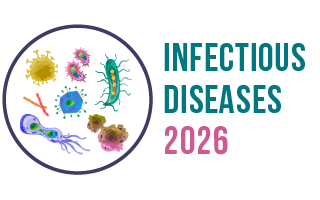4th International Conference on
Infectious Diseases
September 09-10, 2026 | Barcelona, Spain

Infectious Diseases 2026

Kawempe National Referral Hospital, Uganda
Abstract:
Introduction: Missed opportunities in the prevention of mother to child
transmission of HIV (PMTCT) cascade account
for the highest proportion of vertical transmissions observed in the era of
dolutegravir. However, these
and the factors
associated with them have not been well described.
We analyzed missed opportunities and associated factors at a high-volume
tertiary hospital in Uganda.
Methods:
This was a matched case control study. Cases
were perinatally exposed HIV Infected
children while Controls were HIV
Exposed Uninfected children under
5years of age admitted at MNRH. We determined the prevalence of missed
opportunities, and conditional logistic regression was used to obtain the odds of missed
opportunities among cases compared to the controls. Modified poison regression
was used to analyze the factors associated with missed opportunities. We also
documented and ranked the frequencies of mother-reported reasons for missing opportunities.
Results: The mean age of study participants was 24.4 (+16.6) months. The prevalence of any missed opportunity was 33/45(73.3%) among cases and 18/135(13.3%) among controls. Missed opportunities in maternal HIV testing [OR 11.0, CI = 3.07, 39.42] and Nevirapine
use [OR 5.84, CI=1.11, 30.61] were associated with Mother to child HIV
transmission. Factors associated with missed opportunities included maternal
stigma PR 1.63 CI [1.05, 2.52] and late diagnosis of HIV PR 3.35 CI [1.96,
5.73]. Mother-reported reasons for missed opportunities included services
not provided by the health
facilities.
Conclusion: The prevalence of any missed opportunity was high. Maternal
experience of stigma was associated with substantially higher missed
opportunity along the PMTCT cascade
Biography:
Namusisi Prossy is a dedicated pediatrician at Kawempe National Referral Hospital with a Master of Medicine in Paediatrics and Child Health from Makerere University and a Master of Public Health from the Bloomberg School of Public Health, USA, with a concentration in Epidemiology and Biostatistics. Her recent publication focusses on HIV/AIDS.
